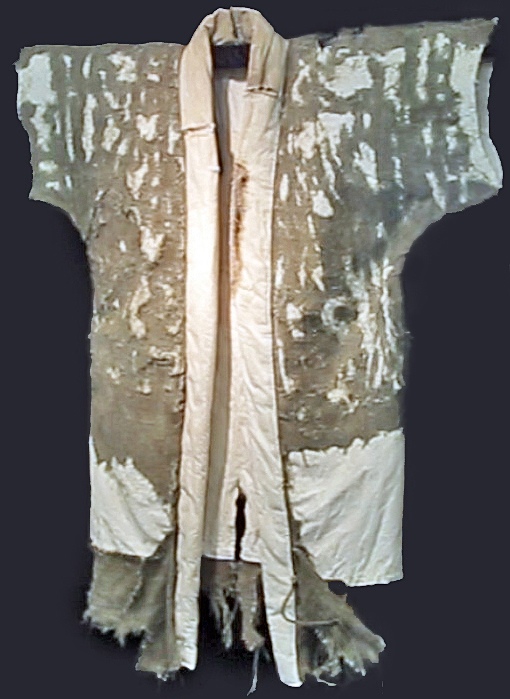
About the Judo Gi

Here a bit of history about the judo gi or the kimono. in the picture the judo gi of Jigoro Kano that is displayed in the Kodokan’s Judo Museum and Library. Who has ever seen or participates in a competition or judo training, the kimono is the official outfit on the mat for the whole athlete of judo. By definition kimono in Japanese means literally "thing to wear".
Outside of Japan that expression means generally a wide range of parts and that together form a visual considered typical or traditional Japanese, but it is also synonymous with the main piece.
In Japan, the centerpiece which we call the kimono is called kosode. The kimonos, as we know it today, have emerged during the Heian period (794-1192). Since the Nara period (710-794), until then, the Japanese used basically sets to separate the pieces of the top and bottom (pants or skirts), Or unique pieces.
But in the Heian period, a new technique of tailoring of kimono was developed. Known as the method of cutting in a straight line, involved the cut pieces of fabric in straight lines and the stitching on a unique piece. With this technique, the manufacturers of kimono didn't have to worry about the shape of the body of the different users.
The method of cutting in a straight line offered many benefits to kimonos. They were easy to preach and very suitable for any temperature: could be used in layers to keep warm in winter, and could be made in lightweight fabrics, becoming comfortable for the summer.
These advantages helped the kimonos doing part of the everyday life of the Japanese. With the passing of time, as in the habit of wearing kimonos in layers turned fashion, the Japanese began to pay attention in how kimonos of different colors would be united and have developed a great sensitivity to color. Basically, the combinations of colors represent both the colors of the station as the political classes to which each belonged. It was during that time, that what we know as "combination of traditional Japanese colors" was created.
During the Kamakura period (1192-1338) and Muromachi (1338-1573), both men and women used kimonos brilliantly colored. The warriors dressed in colors representing their leaders and, sometimes the field of battle was so ostentatious as a fashion show. During the Edo period (1600-1868), The clan of the warrior Tokugawa reigned on Japan. The country was divided between the fields and led by the feudal lords.
The samurai of each area were identified by the colors and models of their "uniforms" that consisted of: a kimono, a play without sleeves known as kamishimo, used on the kimono and a hakama, a pair of pants like a skirt divided. The kamishimo was made of flax, starched to better define the shoulders. With so many clothes for samurai needing to be made, the manufacturers of kimono were perfecting their skill and their manufacture has turned into an art form. The kimonos have become increasingly valuable and the parents started saving them for their children, as a family heirloom.
During the Meiji period (1868-1912), Japan was heavily influenced by foreign cultures. The government encouraged people to adopt the habits and the style of dress of the American West. The official government and the military were obliged by law to use this style of clothing to the official functions (this law has no more effect currently).
For ordinary citizens, it was a requirement to wear kimono in formal occasions with pieces decorated to bring the shield of the family, to identify its origin. These days, the Japanese rarely wear kimonos in day-to-day, reserving them for occasions such as weddings, funerals, ceremonial, or other special events, such as summer festivals. The kimono that is used for the practice of martial arts in Japanese is called "dogi " which means "dress is used in the path or way chosen".
This is why the majority of the martial arts has its kimonos with "gi" at the end such as karate gi, aikido gi and following this sequence, the judo kimono is called judo gi. The contraction of "judo + dogi", That loosely translated, would be "uniform used for the practice of the smooth or gentle way.
The use of the kimono for martial arts practice that are adopted as clothing, is important for a good presentation of art. Of course we must not forget that the kimonos today are made exactly for this practice. They are tested and approved for facilitating the mobility of the practitioner during their martial art's specific exercises. You can find different types of fabrics and materials used to make the kimono: mainly cotton, perhaps some polyester, different types of tarp, and or microfiber. This huge variety allows one to choose the best option for the kind marital art they practice.
Four pieces form the judo gi: Uwagui Wagui (or coat or jacket), Shitabaki (pants), Obi (belt) and last the Zori (Japanese sandal or slipper) which is of extreme importance to the athlete. This is because it is also the responsibility of the athlete to maintain the hygiene of the tatami (mats) and not come on it with the dirty feet.